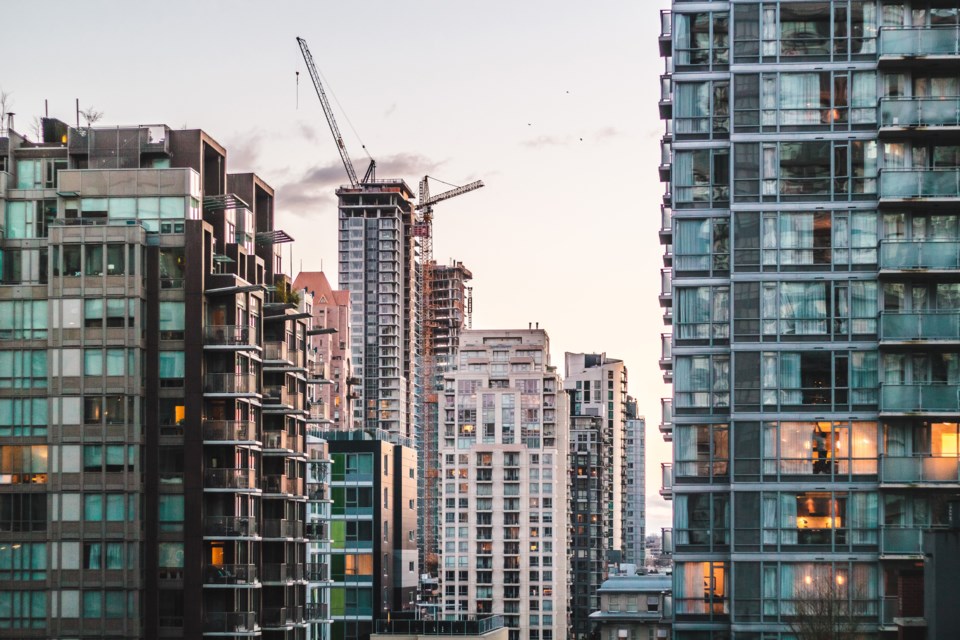Release of June housing resale data last week by the Canadian Real Estate Association provoked mixed reactions.
On the one hand, RBC Economics headlined its analysis of the figures: “A stable market isn’t a bad thing.” While downward pressure on prices was evident in Greater Vancouver, RBC said sales volumes were largely flat compared with a month earlier and confirmed its stance that the national housing market had “passed its cyclical bottom.”
Over at Scotiabank Economics, the mood was more dour: Greater Vancouver sales had not matched the robust figures May delivered, its analysis said, and regional price changes drove down the national benchmark price, “with weakness present across unit types but heightened for higher-priced single-family homes.”
(A look at data for the latest 12 months indicates that the dollar value of sales and the actual number of sales are both down, by 38 per cent and 32 per cent, respectively. Since February, the decline in sales has accelerated, outpacing the drop in aggregate value.)
Somewhere in the midst of the turmoil is that other class of residential property – purpose-built rentals.
The latest numbers from Goodman Commercial Inc. are even darker for this class than they are for detached, townhome and apartment properties. Dollar volume of rental building sales in Metro Vancouver plummeted 62 per cent in the first half of this year versus the same period of 2018, from $1.4 billion to $529 million. The number of transactions fell by 50 per cent, from 84 to 42.
Similar to the standard home market, the rental market was severely impacted by government policies.
“Massive provincial and municipal government intervention was the main driver, with the rental apartment sector taking hits left and right,” says Goodman’s analysis of the downturn in sales and values.
Yet with vacancies at or below one per cent in Metro Vancouver, investors have assets that can’t help but perform. The question is whether the environment will let owners, investors and developers do so, too.
Better elsewhere
According to the Goodman report, the environment for investors who want to build apartments is better almost anywhere than in Vancouver proper, judging by recent approval statistics.
While a public engagement program by Mayor Kennedy Stewart invites ideas to create a Vancouver that can house everyone, and measures have been put in place to strengthen the hand of renters, developers appear to be heading to the suburbs at what Goodman calls a “crushing rate.”
Goodman’s numbers indicate a total of 7,587 units under construction, approved or proposed for Vancouver, with the latter down 29 per cent from two years ago. Meanwhile, proposals in surrounding municipalities have increased 147 per cent for a total of 11,377 units underway, approved or proposed. Dreaming of units isn’t the same thing as building them, but developers’ hopes are clear.
Of course, there are plenty of variables affecting where developers put their hopes: site availability, land costs, approval policies and timelines, and construction costs. But all signs point to growing suburban interest, in part growing suburbs themselves.
Valley opportunities
A recent Colliers International report underscored the trend Goodman noted in its report on multi-family sales, and how regional growth is drawing in new development regardless of the push by factors elsewhere.
An analysis of data from BC Stats and Statistics Canada indicates that the population of the Fraser Valley in 2041 will total more than 1.7 million people. This is a 37 per cent increase from 2016 and will require an additional 165,400 dwelling units.
“Growth of this rate implies an average annual expansion of an estimated 7,200 new dwelling units per year,” the report states.
It then goes deeper: drawing on the B.C. Major Projects Inventory, Colliers indicates that 42 projects are either under development or planned, promising 7,444 dwelling units at an average cost of $394,000 per unit. “Based on an average household size for these projects, housing for approximately 21,300 people will be provided,” it says, but adds: “This will leave a significant shortfall of housing for almost 158,000 new households.” •



